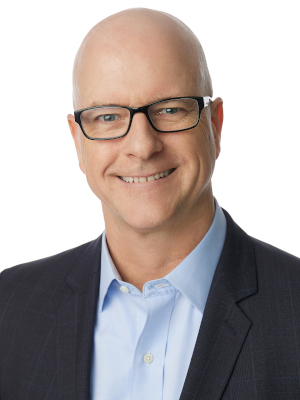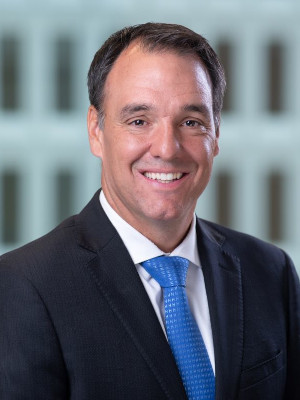This is the fourth article in our October special report on managing family businesses and family offices across the generations.
Many founders of enterprising families are conservative investors, looking to preserve capital while favouring liquidity and income-generating assets to fund the future.
In contrast, the next generation might be sending children to postsecondary schools and working in the family business. They would likely be comfortable with a balanced portfolio that is diversified across private and public markets.
And their children, not yet 18, may have money held in trust and be fully invested in private market opportunities.
How should portfolio strategies differ from generation to generation? Generalities are hard to apply, say advisors in the family office space.
“There’s that cliché that if you’ve seen one family office, you’ve seen one family office,” says Rob Van Wielingen, president and chief executive officer of Viewpoint Investment Partners in Calgary. “In the ultra-high-net-worth space, it is hard to have generic investment plans.”
Still, family office portfolios generally have overarching philosophies governing portfolio design. Here are a few approaches and general guidelines.
The portfolio pyramid

Van Wielingen describes the overarching asset structure as a pyramid with a “rock solid, goals-based sleeve” at the base, diversified across public markets—bonds, stocks and cash—with a smattering of alternative investments to mitigate stock and bond market risks.
As you move up the pyramid, it becomes less liquid, he notes: “more complicated, higher cost, higher attention and higher risk.”
Even then, that structure will not apply to all families. “Some families might be venture capital investors, and that’s how they built wealth, so their pyramid might be inverted,” Van Wielingen adds.
Of course, also driving the contents of each portfolio are the family’s goals, businesses and individual members. Each generation or pool of capital “requires its own ideas,” notes Keith McLean, co-founder and partner at Toronto-based Chamberlain Family Office Advisors. “You really have to determine what the goals are.”
He cites how Generation 1—founders who might be advanced in age—may require a conservative portfolio with limited illiquidity risk, designed to generate income.
At the other end of the spectrum might be Generation 4, great-grandchildren who will have money in trust with most assets in illiquid private markets “with a strong vintage diversification across seven to eight years and geographic industry diversification,” McLean adds.
Family as the institution
Beyond the investments of individual family members, however, is often a family wealth portfolio organized to serve broader legacy goals, says Rob Tetrault, a senior investment advisor at Tetrault Wealth Advisory Group with Canaccord Genuity Corp. in Winnipeg.

“This kind of multi-generational wealth should have an extremely long time horizon,” he says, noting the portfolio will often bear resemblance to a pension fund and be held in a trust or corporation.
One challenge for families and their overall wealth is taking a comprehensive approach to diversification, McLean says. For example, he points to one oil-and-gas family’s operating company—the opco.
“For an oil-and-gas family, putting 100 per cent of the family’s capital into something that is a few percentage points of the global economy does not make sense,” he says. Every investment portfolio held within the family should likely have its oil and gas investment exposure pared back to avoid over-concentration risk.
That said, some families are fine with that type of risk. Some founders even gravitate toward higher risk strategies, an approach that likely has served them well in the past. “Most founders will tell you that they took an undue level of risk with 110 to 150 per cent of their time, energy and capital,” McLean says.
That experience, however, can cut both ways for founders, he adds. Some realize the difficulties in achieving what they did, acknowledging that their success involved a good bit of luck. For them, wealth preservation may be paramount.
Others may want to double down on industries they understand well, which can lead to the aforementioned concentration risk, he says.
This is not just industry-specific risk. It’s illiquidity risk, too.
“If you allocate most of your investment pie to illiquid things, you run the risk of your business competitor, the one you’ve been eyeing to purchase for the last 25 years, finally deciding to sell,” McLean says. “Yet you can’t raise the capital to buy it because you have no liquidity.”
Life experience matters
Typically, founders who seek conservative portfolio approaches started out from humble beginnings, Tetrault says. “The closer you were to poverty, the more risk-averse you are, compared with generations that grew up with wealth.”
Generation 2, in contrast, often has a more balanced approach. “They’re aware the family has institutional-level wealth,” he says.
In turn, they may invest like an institution, in a diversified portfolio that balances long-term growth with near-term liquidity needs with a significant portion of capital in private markets, Tetrault adds.
The further you get away from the source of wealth, the harder it can become to ensure it’s managed responsibly.
Rob Van Wielingen, Viewpoint Investment Partners
With younger generations, personal interests often drive portfolio construction. They may be drawn more to cryptocurrencies, venture capital and impact investing, he says.
Even then, no hard-and-fast rules exist. What’s important for money managers is to balance a family’s overall wealth needs with those of individual family members.
“We’re stewards of their wealth, so we have to make sure that we’re fiduciaries, protecting their capital and their assets,” Tetrault says. “Sometimes, our advice isn’t listened to, but we strive to establish a risk-adjusted compromise.”
That may mean limiting one family member’s exposure to a high-risk asset class to just 5 per cent of their portfolio, he adds.
Guardrails up!
Helping to mitigate risks resulting from family members’ investment styles are the guardrails of family governance. These structures set out how wealth, particularly capital invested for legacy goals, is managed. They can be especially beneficial to protect younger generations who may have more appetite for risk, Van Wielingen says.
“The further you get away from the source of wealth, the harder it can become to ensure it’s managed responsibly,” he says.
Driving governance and accompanying investment policies is a consideration more fundamental than risk-adjusted allocation to private and public markets.
“Overall, investment strategies really boil down to answering the question of ‘what is this money for?’” Van Wielingen explains. “It’s an overarching philosophical consideration rather than a procedural matter like asset allocation, and it is often more challenging to develop.”
It will address questions like, “How do we not spoil our kids with this wealth?”
Age-based and life-circumstance planning is still important for individual family members, but these “are generally a smaller piece of the overall big picture.”
For many families, portfolio design for individual family members, trusts and opcos must ultimately be guided by philosophical goals, Van Wielingen says.
“At the end of the day, it is really more about how to use their capital to create more economic activity and improve society,” he adds, “while motivating future generations to do the same.”
Joel Schlesinger is a Winnipeg-based freelance writer who has written for Canadian Family Offices since 2021. Specializing in investment, wealth advice, real estate and personal finance, he is also a regular columnist for the Winnipeg Free Press, and his work regularly appears in The Globe and Mail, Calgary Herald and Edmonton Journal.
The Canadian Family Offices newsletter comes out on Sundays and Wednesdays. If you are interested in stories about Canadian enterprising families, family offices and the professionals who work with them, but like your content aggregated, you can sign up for our free newsletter here.
Please visit here to see information about our standards of journalistic excellence.




